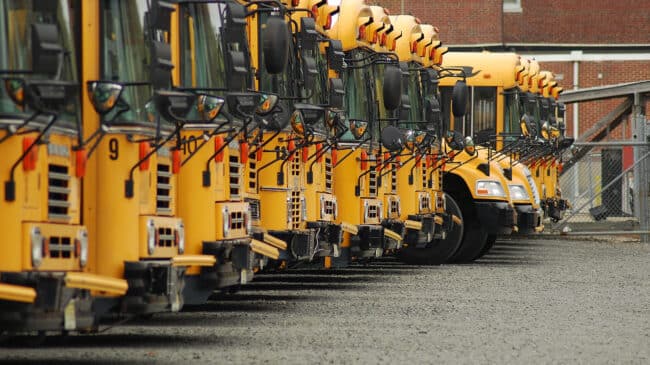In response to bus driver shortages, changing student populations, and their state’s unique geographic needs, Arizona lawmakers have expanded student transportation options.
A new law signed by Arizona Gov. Doug Ducey will remove restrictions on the types of vehicles schools can use to transport students. It will also reform licensing rules that prevent schools from hiring more drivers. Other states would be wise to adopt similar reforms that could help address the myriad transportation challenges that schools face.
Arizona is not the only state struggling to hire bus drivers. At the start of the 2021-22 school year, a survey conducted by the National Association for Pupil Transportation, the National Association of State Directors of Pupil Transportation Services, and the National School Transportation Association found that just over fifty percent of school district respondents said their school bus driver shortage was “severe” or “desperate.” Only one percent said that driver shortages were not a problem.
Federal law requires traditional school bus drivers to hold commercial driver’s licenses (CDLs), which typically require one or two months of training and course fees for learning how to operate heavy-duty trucks, as well as additional training on student safety and driving a school bus. While it is crucial that drivers be properly trained to transport students, requiring 200-plus hours of big-rig training is preventing new employees from entering the field. And some of the driver shortages can also be attributed to the fact that bus drivers left schools to pursue higher-paying commercial jobs during the COVID-19 pandemic.
While states don’t have the authority to waive federal CDL requirements for standard school bus drivers, states that follow Arizona’s lead and give school districts access to other transportation options could expand the field of capable candidates for open positions.
Arizona’s new law also acknowledges the need for flexible busing options for rural schools and students taking advantage of educational choice opportunities at public and private schools in other jurisdictions.
Up to now, only eight states have allowed school districts to contract with companies that operate vans of 11-to-15 passengers for school transportation. Federal regulations also prevent manufacturers from selling vehicles that don’t comply with rigorous school bus safety standards to school districts or to private contractors for the purpose of school transportation.
Big yellow school buses are much more expensive to operate than smaller vehicles and are much less energy-efficient. School district administrators bear a heavy financial burden when they have to send a traditional school bus along a rural route with only 10 students.
Arizona will remedy this problem by allowing schools to use 11-to-15-passenger vans to transport students while also creating new safety standards for the vehicles. Combined with the new law’s provision that increases the distance that schools can transport students outside their school districts from 20 miles to 30 miles, smaller vans could transform how students in the state get to school and which schools they can attend.
While allowing for 11-to-15-passenger vans and easing licensing requirements wherever possible is a step in the right direction, states should also ensure that school districts can contract with Uber-like transportation network companies and that they have the funding flexibility to do so. Most states have a long way to go toward ensuring that their transportation options reflect the diverse needs of today’s students.
If policymakers across the country considered similar ways to diversify their transportation fleets, they could deliver a win for school district budgets—and for students pursuing school choice and others with limited transportation options.
A version of this column previously appeared in Real Clear Education.

